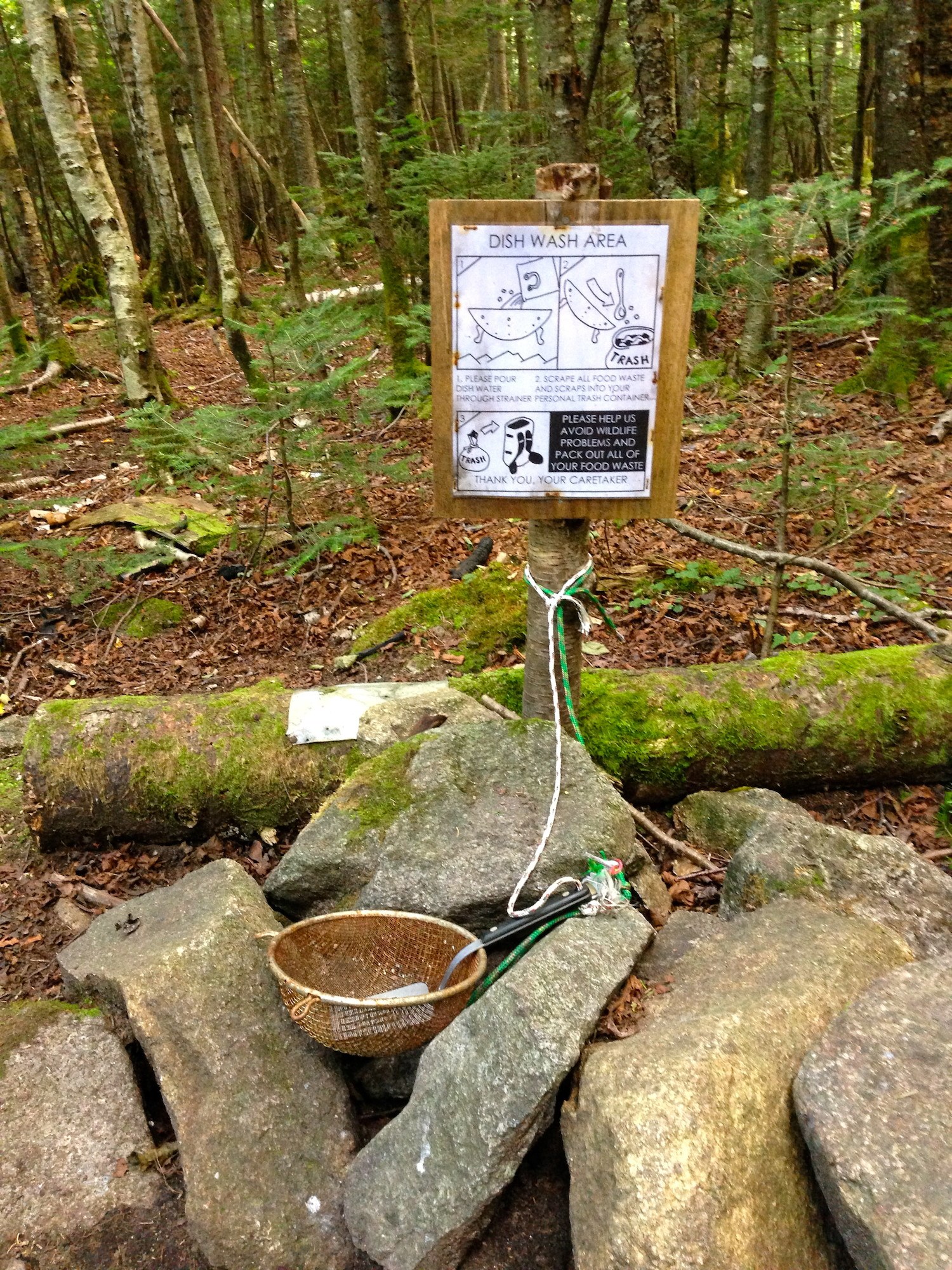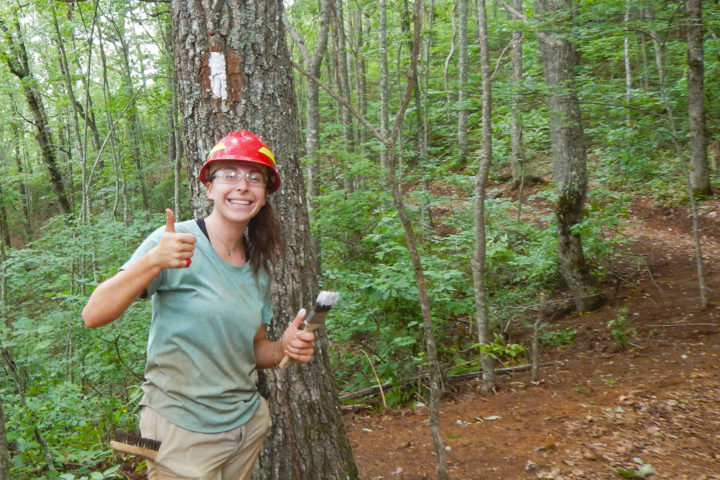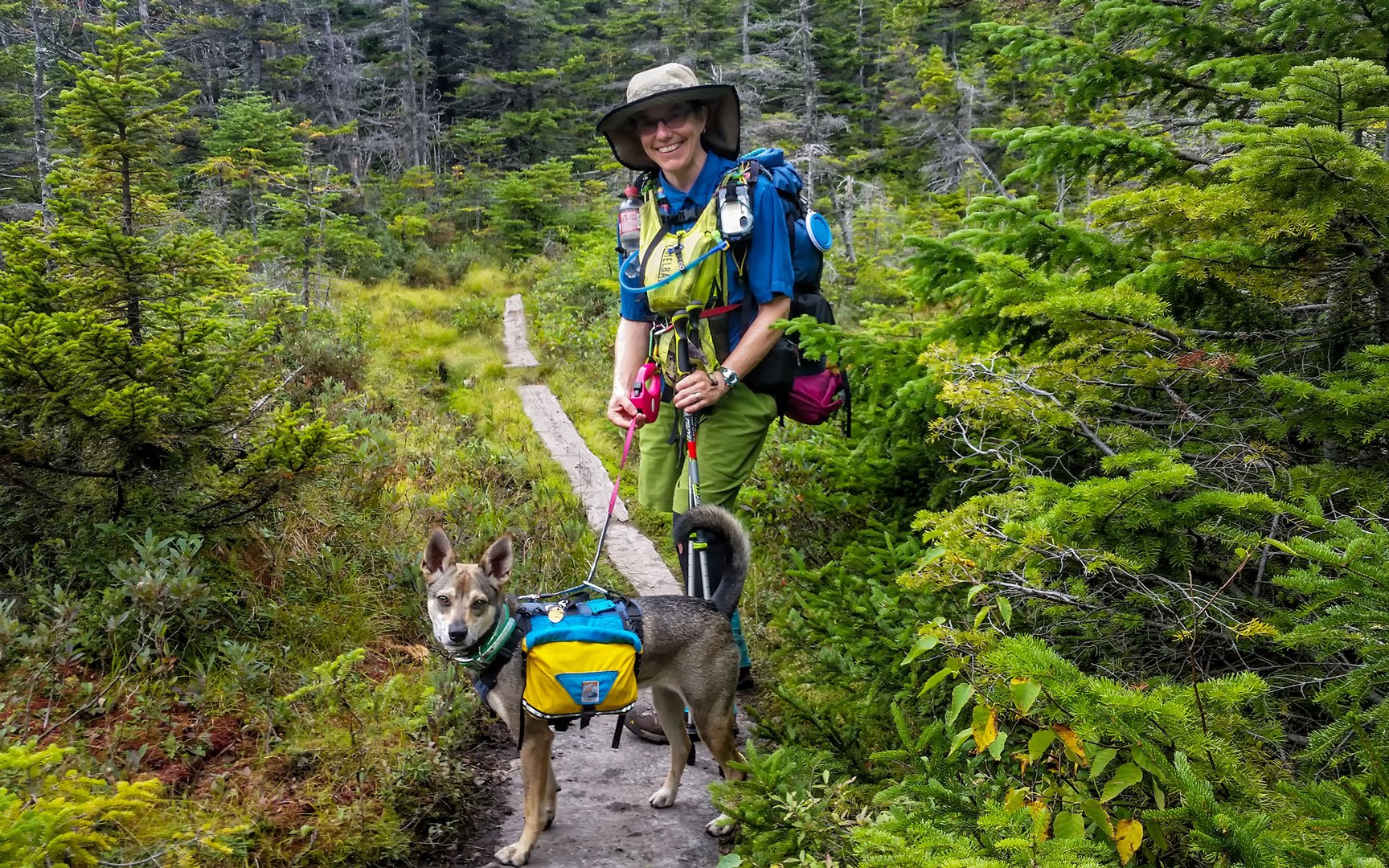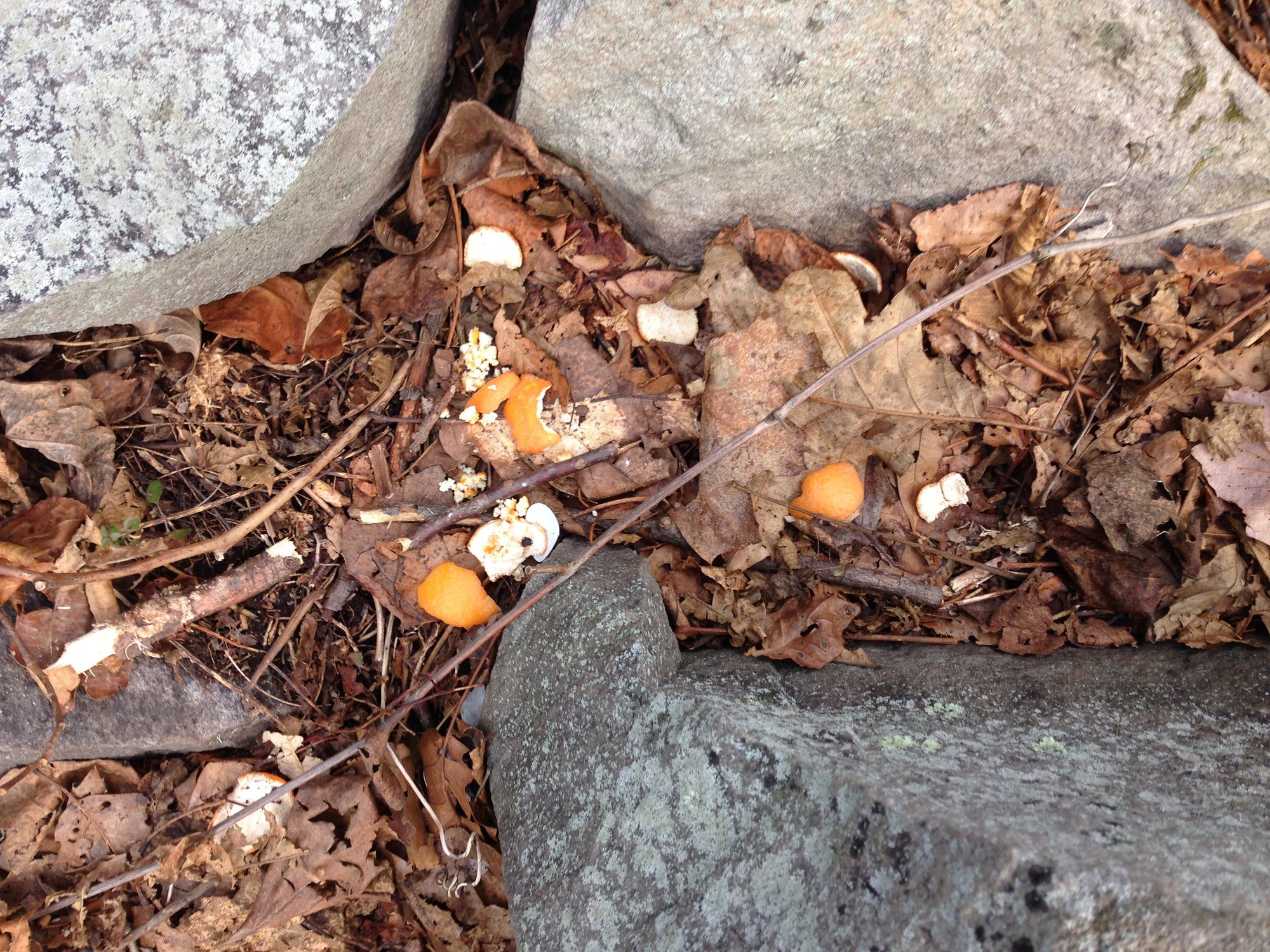By Caitlin Miller, ATC Information Services Manager
11 Easy Ways to Improve Your Leave No Trace Footprint
April 8, 2022
When I am alone on the Appalachian Trail (A.T.), it can be easy to forget I am on one of the most popular trails in the world. Yet with more than 3 million annual visitors on the Trail each year, the actions we take individually on the Trail might repeated by hundreds (or thousands) of hikers each season — from where we step to where we spit our toothpaste at the campsite. All that repetition, even with things that seem small or insignificant, can ultimately build into much larger impacts to the Trail and the A.T. hiking experience.
I try to keep our cumulative impacts on the A.T. in mind when it comes to how I practice Leave No Trace. These principles of responsible recreation in the backcountry require individual action that can, one by one, help combat problems caused by many visitors.
All that being said, most Leave No Trace actions are not huge undertakings that require a fundamental shift in your hiking plans. Instead, they are a checklist of small changes that ultimately lead to big positive impacts when we all follow them together. To help get you started, here are 11 simple and seemingly small ways you can practice Leave No Trace and help protect the A.T. experience.
1. Research where you will be hiking (aka “Know before you go”)
Do a quick Internet search before your hike so you know where you are headed, how to get there, what regulations exist, and any important Trail conditions or closures. Not sure what to search for or who to call? Contact us!
2. Hike in the center of the Trail
It can be tempting to keep your feet dry by walking around mud puddles in the middle of the Trail, or by walking beside/around stone steps, but sticking to the center of the Trail prevents damage to Trailside plants and minimizes the erosion caused by millions of feet stomping on the Trail every year.
3. Step off the Trail smartly
Place your feet with care when you yield to other hikers. Folks heading downhill should yield to uphill hikers (no one wants to lose momentum on a steep climb!) and, when you step off the Trail to let someone by, step off on a rock or bare soil.
Individual hikers should also yield to groups — there’s a much smaller impact when one person steps off the Trail compared to the impact of 10 people stepping off in the same place.
4. Keep your pup on a leash
While I love nothing more than watching my dog zoom around the forest unencumbered, trails like the A.T. are not the best place for her to do so. Keeping dogs leashed protects wildlife, prevents them from trampling vegetation, and helps keep them safe — recall is never 100% reliable, even for well-trained pups. Plus, not everyone on the Trail wants your dog to run up to them.
5. Share the views
If you get to a popular vista on the Trail and there are other hikers, take a moment to soak in the view and snap a few photos if you like, then step aside. Don’t eat lunch, rest, or otherwise linger in the prime spot if there are other people waiting.
6. Don’t leave behind “compostable” food
The mantra “pack it in, pack it out” includes compostable food scraps. Apple cores, orange peels, pistachio shells, eggshells, etc. should be packed out and disposed of at home. Even a small amount of food scraps can attract wildlife, but several hundred hikers’ worth of apple cores at one popular viewpoint or shelter really starts to cause big problems. Also, while these items will eventually decompose, some can cause an eyesore for other visitors for months on end (or longer at higher elevations).
7. Leave the Trail one piece cleaner (or more) than when you started

You don’t have to be an ATC ridgerunner to do your part — pack out an extra piece of trash (or two, or three, or…) and the Trail will be that much cleaner because of you.
Bring at least one extra piece of trash with you when you leave. Packing out just one piece of garbage makes a difference (and other people will follow your lead).
8. Don’t burn your trash
Throwing your trash into a campfire might make it seem to disappear, but this can cause permanent damage to the environment, leach chemicals into nearby water sources, and attract wildlife to camping areas. Also, don’t forget the principles of campfire safety.
9. Store your food and “smellables” properly
Remember that the A.T. isn’t just for hikers — you are also visiting the homes of incredible Appalachian wildlife, including black bears. By storing your food and other “smellables” securely — such as in a bear canister or in provided food storage at designated campsites — you are doing your part to help keep bears and other animals wild (and keep you and other hikers safe).
10. Don’t use soap directly in water sources

Some campsites have dedicated washing areas for dishes. If they don’t, always wash your dishes 200 feet from water sources. Photo by Laurie Potteiger.
Even pure castile, 100% fragrance free, all-natural, cage-free soap is not naturally occurring in the lakes, rivers, and streams along the Trail. Even a small amount of soap from several hundred hikers each over a season starts to have a big impact. The chemicals in the soap can damage the often-fragile aquatic ecosystems under the surface.
If you want to use soap on the Trail, use the smallest amount possible and stay at least 200 feet from water sources. Use a washpit or designated washing area if one is available (washpits are screened boxes placed over a pit of rocks that help concentrate impacts from gray water).
11. “Broadcast” waste liquid or use a designated washpit
If no washpit is available, strain out any remaining food scraps to pack out before “broadcasting” your remaining dishwater. To do so, walk at least 200 feet from the shelter and any tent sites and 200 feet from water before scattering the dishwater over a broad area.
Broadcast your toothpaste, too. Just like with dishwater, walk 200 feet from the campsite/shelter and 200 feet from water before spitting out your toothpaste. And don’t delicately spit it out, be sure to really spray the stuff! Broadcasting works best when the liquid is spread out as much as possible, not poured in a single spot.
Never spit toothpaste or dump dishwater in a privy. This can attract animals and disrupt the magical decomposition process happening below the seat.
Extra credit: drink your (soap free) dish water. For the hardier stomachs out there, become part of the backcountry clean plate club by drinking the soap-free dishwater left over from rinsing your cookware. After finishing your meal, pour a small amount of treated/filtered water into the (mostly empty) pot, swirl, and bon appétit!
These 11 tips are just the beginning to becoming a responsible A.T. visitor, but small changes can make a big difference when everyone joins in. Remember, small, individual actions add up – each bear canister used and flower left to grow another day strengthens the A.T. landscape and helps protect the A.T. experience for everyone. Be sure to read up on all the Leave No Trace principles and practice them the next time you adventure on the Trail.
Learn More about Leave No Trace principles
Discover More

Plan and Prepare
Hiker Resource Library
A collection of resources for hikers to stay safe, healthy, and responsible on the Appalachian Trail.

BACK TO THE BASICS
Leave No Trace
Wondering how you can take care of outdoor places like the Appalachian Trail (A.T.)?

From maintenance of the footpath and its facilities to greeting guests
Volunteer Opportunities
The Appalachian Trail (A.T.) would not exist without volunteers.










